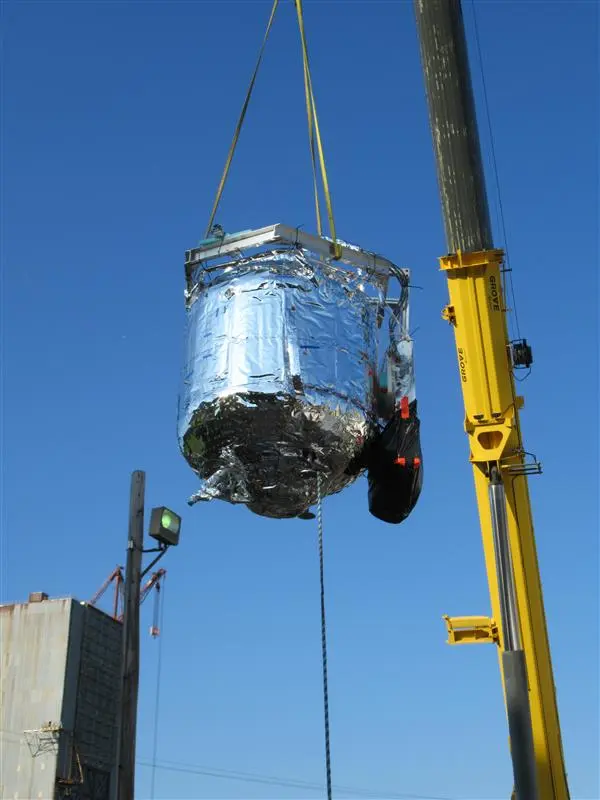From an engineering perspective, space is surprisingly hot. Or, more specifically, solar energy can make systems that need to be kept at a very cold temperature heat up much more quickly than expected, given the reputation that space has of being cold. In some cases, this heating causes issues with long-term missions, which is why NASA is actively testing a two-stage active cryogenic system to keep one important consumable as cold as possible - fuel.
Cryogenic propellants, like liquid oxygen and hydrogen, are the most common fuels used in space exploration, and each must be kept at extremely cold temperature to maintain their liquid state: -254 C for hydrogen and -184 C for oxygen. For any long duration space mission, more liquid propellants will be required than can be put into orbit in a single launch of even the largest boosters, meaning more than one trip will be necessary to get enough cryogenic fuel into orbit for a crewed mission to Mars.
Once the fuel is launched, it would have to sit in a storage container awaiting its time to join the rest of its mission, but during that time it would be consistently heated up by the Sun, causing some of the fuel to vaporize into its gaseous form. Too much gas and heat can cause an unsafe pressure build up in the tank, which NASA typically mitigates one of two ways. Either they design the tank to be intentionally larger than the amount of fuel would require, allowing enough space for the gaseous build-up to not cause pressure issues. Or they outgas the fuel, relieving the pressure, but also losing valuable fuel in the process.
Video dicsussing NASA's investment into cryogenic fluid management. Credit - NASA Space Tech YouTube ChannelBoth of those solutions have problems which NASA, or whatever agency or company ends up being responsible for long duration crewed missions in the future, would like to avoid. So NASA engineers came up with a two-stage active cooling method that uses 20 different new technologies to try to prevent boil-off of the fuel entirely. The system can best be thought of as a three-stage process though.
Immediately surrounding the fuel tank, there is a set of tubes containing liquid helium cooled to -254, the same temperature as is needed to keep hydrogen in its liquid form, but is slightly above the boiling temperature of the helium itself, allowing it to keep its gaseous stage. This first stage cooling system is then wrapped in a layer of aluminum, which is highly reflective and bounces back much of the solar radiation that would otherwise hit the system - effectively cooling it by passive means. Another set of tubes holding helium gas cooled to -181 C is looped around the aluminum shell in an attempt to take some of the load off of the interior cooling system.
This system primarily relies on convection between the propellant tank and the cooling tubes surrounding it to remove the heat from the fuel. However, the helium itself is cooled by a system called a cryo-cooler, which uses a system of compression and expansion to transfer heat from one part of the system (i.e. the fuel tank) to another (i.e. a heat sink). Once the heat is transferred to the heat sink, it is radiated away, using the only method available for getting rid of heat in in-space applications, since there is no air or surrounding material to facilitate convection or conduction.
 Workers lower the cryogenic test chamber into place at NASA's Marshall Space Flight Center. Credit - NASA / Kathy Henkel
Workers lower the cryogenic test chamber into place at NASA's Marshall Space Flight Center. Credit - NASA / Kathy Henkel
The full no-boil cryogenic system has been undergoing testing at NASA’s Marshall Spaceflight Center, with the planned testing to be completed by September. After some further design tweaks, it should be ready for an in-flight test soon. But with all the changes and funding disruptions at the agency, its unclear when, if ever, this system will get that chance. Hopefully someday it does, because it will be absolutely critical to the success of any long-term crewed mission that any organization will eventually plan.
Learn More:
NASA - Stay Cool: NASA Tests Innovative Technique for Super Cold Fuel Storage
UT - NASA is Working on Zero-Boil Off Tanks for Space Exploration
UT - NASA's First SLS Mars Rocket Fuel Tank Completes Welding

